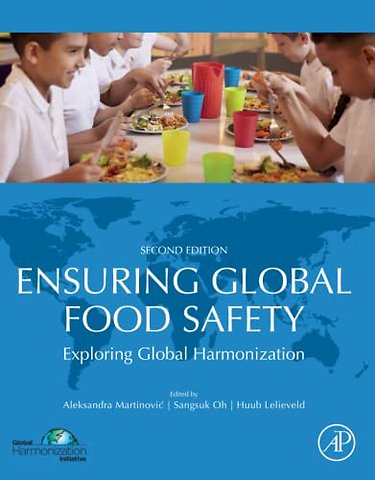<p>1. Introduction - Ensuring Global Food Safety: A Public Health Priority and a Global Responsibility<br>2. Safety and Security: The Cost of Food Regulatory Failure<br>3. Development of Food Legislation Around the World<br>4. Integrated Risk Assessment and Cost Benefit Analysis: An Economics Perspective on International Trade and Food Safety<br>5. The Global Harmonization Initiative <br>6. Food Safety Regulations within Countries of Increasing Global Supplier Impact<br>7. A Simplified Guide to Understanding and Using Food Safety Objectives and Performance Objectives<br>8. Regulating emerging food trends: A Case Study in Insects as Food for Humans<br>9. Towards Intended Normal Use: A European Appraisal of the Chloramphenicol Case and some Thoughts on the Potential of Global Harmonization of Antibiotics Regulation<br>10. RDAs and Intended Normal Use – Efficient Tools in the Universal Management of Risks and Benefits of Micronutrients<br>11. Global Harmonization of Food Regulations: Benefits and Risks of Organic Food<br>12. Mycotoxin Management: An International Challenge<br>13. Novel Food Processing Technologies and Regulatory Hurdles<br>14. Processing Issues: Acrylamide, Furan and Trans Fatty Acids<br>15. Food additives and Other Substances Added to Human Food<br>16. Food Packaging Legislation: Sanitary Aspects<br>17. Nanotechnology and Food Safety<br>18. Monosodium Glutamate in Foods and its Biological Effects<br>19. Responding to Incidents of Low-Level Chemical Contamination in Food<br>20. Nutraceuticals: Possible Future Ingredients and Food Safety Aspects<br>21. Nutrition and Bioavailability: Sense and Nonsense of Nutrition Labelling<br>22. Regulating Nutrition Claims: A Case Study: The First Legislation for Foods with Health Claims in Korea <br>23. Bioactivity, Benefits and Safety of Traditional and Ethnic Foods<br>24. Water Determination in Food<br>25. Global Harmonization of Analytical Methods<br>26. Global Harmonization of the Control of Microbiological Risks<br>27. Testing for Food Safety Using Competent Human Liver Cells<br>28. Harmonization of International Standards<br>29. Capacity Building: Harmonization and Achieving Food Safety<br>30. Capacity Building: Building Analytical Capacity for Microbial Food Safety<br>31. Education in food safety at all levels, from academics to street handlers</p>
